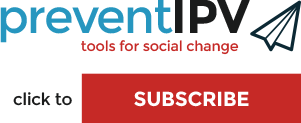Men and Boys' Engagement
Engaging Men and Boys as IPV Prevention Allies
| “Given how nascent men’s engagement is to IPV prevention, and given the paucity of literature in this area, it is proving very helpful to work closely with… participants to learn from their experience. At this stage, practice-informed evaluation is critical.” (Rhode Island Coalition Against Domestic Violence staff) |
This story features lessons learned from three coalitions in Alaska, Ohio, and Rhode Island that implemented approaches to engage men and boys in IPV prevention: Alaska Men Choose Respect, Ohio Men’s Action Network (OHMAN), and Ten Men. The three coalitions’ approaches provide men a clear point of entry in the movement, an opportunity to establish a personal commitment to IPV prevention and concrete activities to help prevent IPV in their lives and communities. Their approaches focus on media messaging, social norms campaigns, networking/coalition work, peer support, mentorship, and skill building around leveraging community influence to impact change. Their experiences highlight the value of taking a learning approach in an area where there is limited information on potential barriers and facilitators to implementation.
Key Lessons Learned & Highlighted Strategies
Key Lesson #1: Before engaging men in IPV prevention, it is important to select men that already believe they have a role to play in preventing violence against women.
- The Rhode Island Coalition developed criteria and corresponding screening questions to identify male participants that would be a good fit for Ten Men that focused on recruiting male members who: care about IPV and have a passion for social justice, come from racially and ethnically diverse backgrounds, have a diversity of professional connections, possess baseline knowledge of gender violence and oppression, and embrace feminist and non-violence principles.
- The Juneau Community Coalition administered a community readiness assessment to determine the readiness of men in Juneau to engage in their efforts based on: 1) perceptions of community awareness of efforts to prevent IPV, and 2) community attitudes toward sexual and intimate partner violence.
Key Lesson #2: To reach a diverse group of men, it is critical to include participants with established community connections.
- The Rhode Island Coalition learned that recruiting Ten Men participants from a broad representation of sectors (e.g., religious leaders, for-profit, non-profit, higher education) was important to expanding their reach to wider audiences. They hired an experienced Men’s Engagement Coordinator with established connections within the community to broaden outreach efforts and facilitate the engagement of men in conversations about gender equity and healthy masculinity.
- The Ohio Coalition developed a specific objective to increase the number of diverse community partners engaged with OHMAN, and sponsored community events including presentations, meetings, and community roundtables to help identify and develop sustainable collaborations.
Key Lesson #3: Evaluating an entirely new approach for which there is no strong precedent, existing format, or guidance requires flexibility and a willingness to embrace uncertainty.
- The Rhode Island Coalition made room for participants to inform the evaluation process (practice-informed evaluation), which included the real-time sharing of findings with stakeholders, adjusting evaluation tools as necessary, and using data to make mid-course changes and to inform both future cohorts of Ten Men and related media campaigns.
- The Ohio Coalition surveyed OHMAN leadership and members of their social and professional networks to hone in on men’s skills in influencing the social norms of their peers and to inform project implementers of the specific context in which they could center OHMAN’s efforts. Their ongoing efforts to seek and use input resulted in the revision of their mission and vision statements several years into the program.
Tools for Adaptation
- (2014) by the Council on Domestic Violence & Sexual Assault and Alaska Network on Domestic Violence & Sexual Assault
- Ohio DELTA FOCUS Case Study Final Report (June 2018) by Justin Carter, Rebecca Cline, Megan Crouch, Lori Jones and Sandra Ortega for the Ohio Domestic Violence Network
See "Approach 1: Engaging Men in Primary Prevention of IPV" (pp. 8-18) - (December 2015) by Sandra Ortega
- Infographic: (2018) by the Ohio Domestic Violence Network
- (2017) by the Ohio Domestic Violence Network & Ohio Alliance to End Sexual Violence
- (Revised June 2018) from the Rhode Island Coalition Against Domestic Violence
- Brochure: from the Rhode Island Coalition Against Domestic Violence
- Poster: from the Rhode Island Coalition Against Domestic Violence
Highlighted Projects
- Ohio Domestic Violence Network: Ohio Men’s Action Network (OHMAN)
- Juneau Community Coalition: Alaska Men Choose Respect
- Rhode Island Coalition Against Domestic Violence: Ten Men
Related Resources from DELTA FOCUS Grantees
- Keychain Cards: by the Florida Coalition Against Domestic Violence and Aid to Victims of Domestic Abuse, Inc.
- Posters: by the Florida Coalition Against Domestic Violence and Aid to Victims of Domestic Abuse, Inc.
- Program Brochure: Skin to Skin Contact for Fathers and their Babies from the Indiana Coalition Against Domestic Violence
- from the Indiana Coalition Against Domestic Violence





